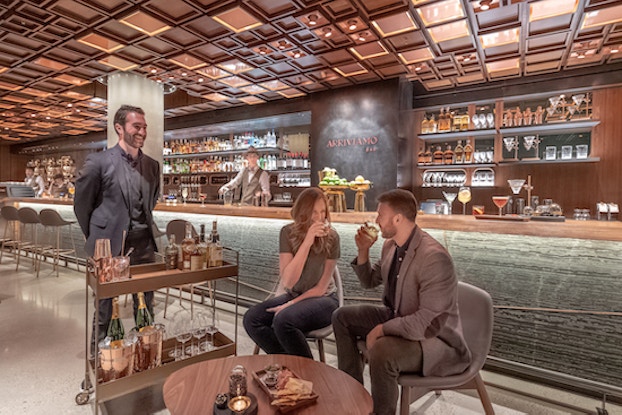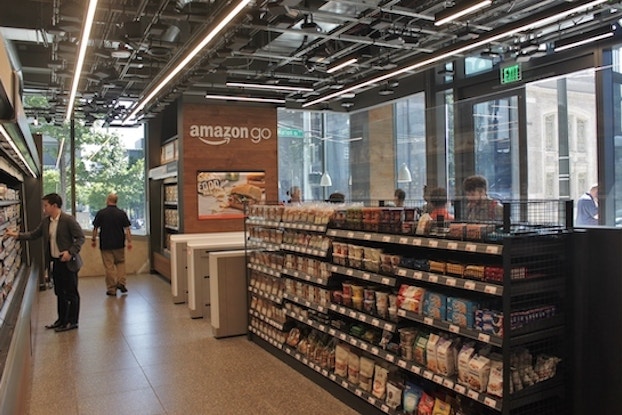
It’s safe to say that all that talk about the retail apocalypse, whereby online shopping threatened to render brick-and-mortar stores virtually obsolete, turned out to be a tad hyperbolic.
Despite Amazon’s ever-tightening grip on the retail industry and consumers’ smartphone-tethered, on-demand purchasing behavior, physical retail still commands nearly 90% of U.S. retail sales. While e-commerce is indeed eclipsing store growth, it’s still projected to account for just 10.7%, or $586.9 billion, of the $5.6 trillion U.S. retail market in 2019, according to eMarketer.
Meanwhile, digital-first brands — from Casper mattresses to Allbirds footwear — are taking the brick-and-mortar plunge, opening 850 stores across the country over the next few years, enticed by higher sales conversion rates and lower customer acquisition costs than e-commerce.
In some cases, these online-first merchants are launching in spots made available by the nearly 6,000 store closures on tap this year, estimates Coresight Research, as the retail landscape navigates a period of unprecedented flux to keep step with today’s connected shopper.

Interested in a small business membership?
Find out how the U.S. Chamber of Commerce can help your company grow and thrive in today's rapidly-evolving business environment. Connect with our team to learn how a small business membership can benefit your bottom line and help you achieve your goals.
“The role of the store is shifting,” said Scott Lachut, president of research for business intelligence firm PSFK, during a presentation of its new Store Experience Design Debrief in New York City. “At a macro level, giant [store] spaces of the past are starting to shrink and starting to specialize and connect to the online experience … as mobile is a gateway to a broader brand experience.”
Lachut and Penn Whaling, senior strategist for PSFK, detailed how eight pillars of store experience and design — from “co-creation studios” like personalized jeans at Levi’s largest store to “interactive merchandising” a la item-ordering kiosks in American Eagle’s fitting rooms — are recasting the global shopping landscape.

Plug and play infrastructure: ‘Turnkey’ stores via BrandBox from big mall operator Macerich
Retail service providers and landlords are offering brands, namely emerging digitally native brands, with flexible turnkey solutions and short-term leases to opening a physical retail space, while giving mall owners breathing room to test potentially new and exciting merchants without the commitment and financial risk of expensive build outs and long leases.
For example, digitally native brands are setting up shop in malls operated by Macerich properties via its BrandBox platform with modular walls and storefronts. The trend speaks to a kind of retail-as-a-service model whereby spaces are built for flexibility, Lachut said.
Architectural storytelling: Starbucks’ ‘immersive’ Roastery coffee experience and ‘the journey of the bean’
Retailers are using physical spaces to tell their brand stories via high design and new expressions of their distinct attributes. Starbucks’ new Roastery store in New York City’s Meatpacking District “reflects the journey of the coffee bean” through an immersive, elevated café design that includes the Arriviamo cocktail bar, Whaling said. Small-batch roasting happens on site, where roasters, baristas, commessas and mixologists serve up a curated menu of coffee and tea “cocktails.”
Interactive merchandising: Personalized drinks inspired by your face, courtesy of Walgreens
Merchants are flirting with responsive in-store technologies, such as interactive shelf displays and artificial intelligence-powered virtual demos, to bring products to life in new ways while amassing valuable data on shoppers’ in-store behavior to continually enhance the experience.
Japan’s GU Style Studio store — whose parent company, Fast Retailing, also owns Uniqlo — allows shoppers to try on outfits via their own personalized digital avatar.
And at Walgreens’ Union Square store in Manhattan, the drugstore chain is testing face-detection technology that recognizes the shopper’s age and gender to serve up targeted drinks.
Retailers are shrinking or even eliminating their point of sale.Scott Lachut, president, PSFK
Partnered galleries: Summoning surprise and delight via matchups like Banana Republic and Cos Bar beauty
Retailers are forming partnerships with brands to foster moments of discovery in store, while broadening their offerings with unexpected product categories — like fashion retailer Banana Republic’s foray into luxury beauty via Cos Bar shops in its San Francisco flagship on Grant Avenue.
Co-creation studio: From personalized Levi’s jeans to customized closets from the Container Store
As everyday folks craft their own personal brand on public platforms from Facebook and Instagram to LinkedIn, retailers are inviting shoppers to take part in crafting the products they buy, too. Merchants are facilitating in-store personalization experiences, from designing one’s own dream closet at the Container Store’s “next generation” Dallas flagship to customizing their jeans at Levi’s Times Square store.
At the brand’s largest store worldwide, direct-to-garment printing enables shoppers to customize Levi’s apparel with photos, images, logos and text designed by local New York artists.
Inviting shoppers into the design process allows them to “create an extension of themselves that ties to the brand,” Lachut said.
Service marketplace: From Walmart pet clinics to Office Depot co-working hubs
Merchandise has become a less-precious commodity as shoppers can buy anything anytime online. Seeking out new paths to differentiation and ways to insinuate their brands into shoppers’ everyday lives, retailers are adding services such as the co-working spaces Office Depot is testing in three markets and Walmart’s in-store veterinary clinics.

Liberated spaces: Cashierless convenience stores like Amazon Go nix the dreaded wait in line
Merchants are tapping technology to automate and streamline the checkout process and meet consumers’ ever-escalating, e-commerce-informed demand for heightened shopping speed and ease. Indeed, “Retailers are shrinking or even eliminating their point of sale,” Lachut said.
At Amazon’s convenience store format Amazon Go, shoppers passing through turnstiles at the store entrance scan their personalized bar codes via the Amazon Go app on their smartphones. When done shopping, they can simply leave the store. Their Amazon account is charged later, and they are sent a receipt for any purchase made.
Micro-fulfillment centers: The ‘phygital’ makeover of stores
Stores are increasingly doubling as fulfillment hubs for online orders as shoppers gravitate to retailers’ buy online, pick up in store perks. Retailers are upping the convenience factor with self-serve pick-up kiosks for easy order retrieval.
With the goal of making same-day delivery or pickup available to more than 65% of its shoppers by 2020, Ahold Delhaize, parent company of grocery chain Stop & Shop, is rolling out 600 click-and-collect locations this year.
The key takeaways for retailers, according to PSFK: Let your space tell your story; measure experiences, not sales per square; be flexible and responsive; and elevate the store beyond the transaction.
CO— aims to bring you inspiration from leading respected experts. However, before making any business decision, you should consult a professional who can advise you based on your individual situation.
CO—is committed to helping you start, run and grow your small business. Learn more about the benefits of small business membership in the U.S. Chamber of Commerce, here.




